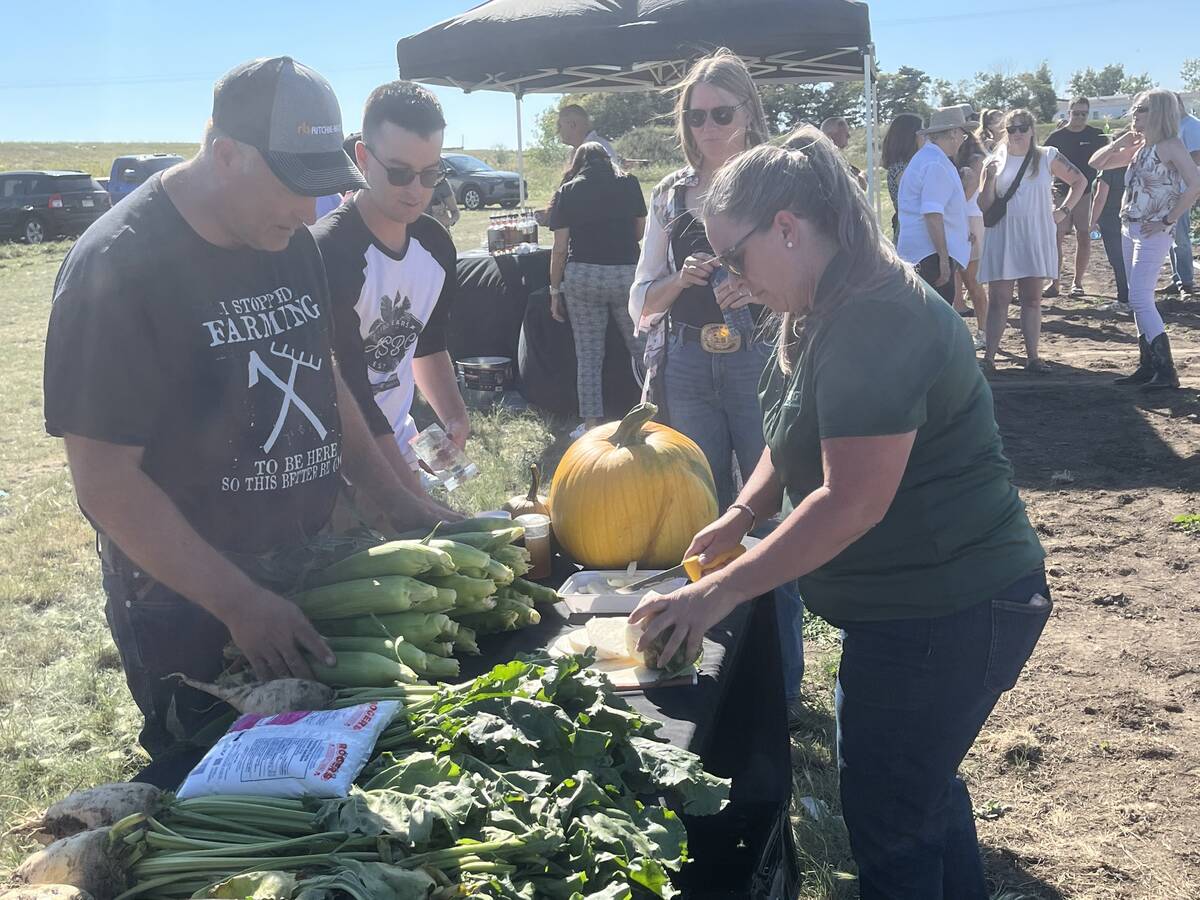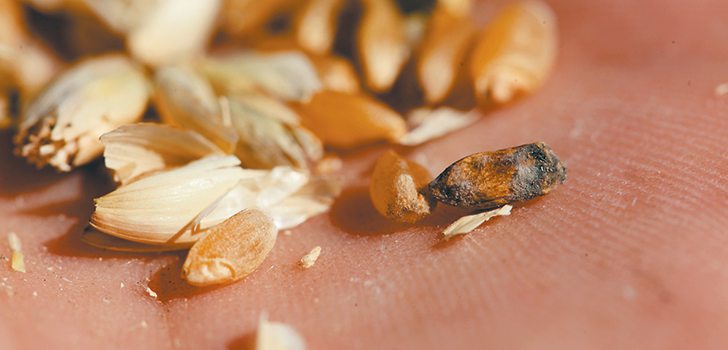While recent wet weather is ideal for researchers studying disease resistant durum, growers need to scout fields and consider fungicides
OUTLOOK, Sask. — Recent wet weather should have farmers concerned about a 2014 repeat of fusarium head blight in their durum.
However, it has Saskatchewan researchers eager for the chance to carry out more studies of the disease.
“Conditions don’t look too great right now for (less) fusarium, but it looks good if you’re a pathologist,” said Randy Kutcher during the annual field day at the Canada-Saskatchewan Irrigation Diversification Centre (CSIDC) in Outlook July 14.
“This rain has been ideal for field trials but not for growers whose (durum wheat) spikes have been just emerging and flowers are opening up,” said Kutcher, a University of Saskatchewan researcher and program chair at the Ministry of Agriculture Strategic Research program.
Read Also

Alberta farm lives up to corn capital reputation
Farm to Table Tour highlighting to consumers where their food comes from features Molnar Farms which grows a large variety of market fruits and vegetables including corn, with Taber being known as the Corn Capital of Canada.
Kutcher and his team are in the first of a three-year study to see if genetic resistance alone can control fusarium head blight, or if fungicides combined with genetic resistance provides better control.
He said a single durum variety even moderately resistant to fusarium does not exist, so transferring resistance characteristics from other wheat varieties is difficult.
“We don’t just need resistance. We also want to keep other agronomy and quality traits,” said researcher Gurcharn Brar.
“The more genes you introduce, the better resistance you will have. It’s quantitative,” he said.
Tests are underway with three different genes and the combination of each, as are tests looking into the interaction of those different genes with fungicides.
Kutcher said the 2014 epidemic was a catalyst that got scientists, industry and government started to look specifically at fungicide controls in durum, which until now has not had extensive research compared to hard red spring wheat and winter wheat.
Funding partners include the Saskatchewan Ministry of Agriculture, Western Grains Research Foundation and Sask Wheat at research plots in Outlook, Indian Head, Scott and Saskatoon.
Because it’s so difficult to know when to apply fungicide most years, one of the research goals is to develop recommendations for better disease management. Treatments include durum seeded at a low and high seeding rate and the fungicide Caramba applied at five different growth stages.
Kutcher said producers should combine their control measures by practicing good rotations and using both a fungicide and a resistant variety.
“If you put all three together you can get reasonable effective control. Anyone on its own probably isn’t sufficient if the disease is severe.”
The Outlook area received 127 millimetres of rain and warm temperatures during the two weeks leading up to the field day.
During the event, Kutcher said if similar weather conditions persist, the province could experience a crop similar to the 2014, which had widespread yield and quality loss.
“That’s a really high risk factor with a disease like fusarium because it infects when those spikes are coming out of the boots and just when the flowers are opening up.”
















